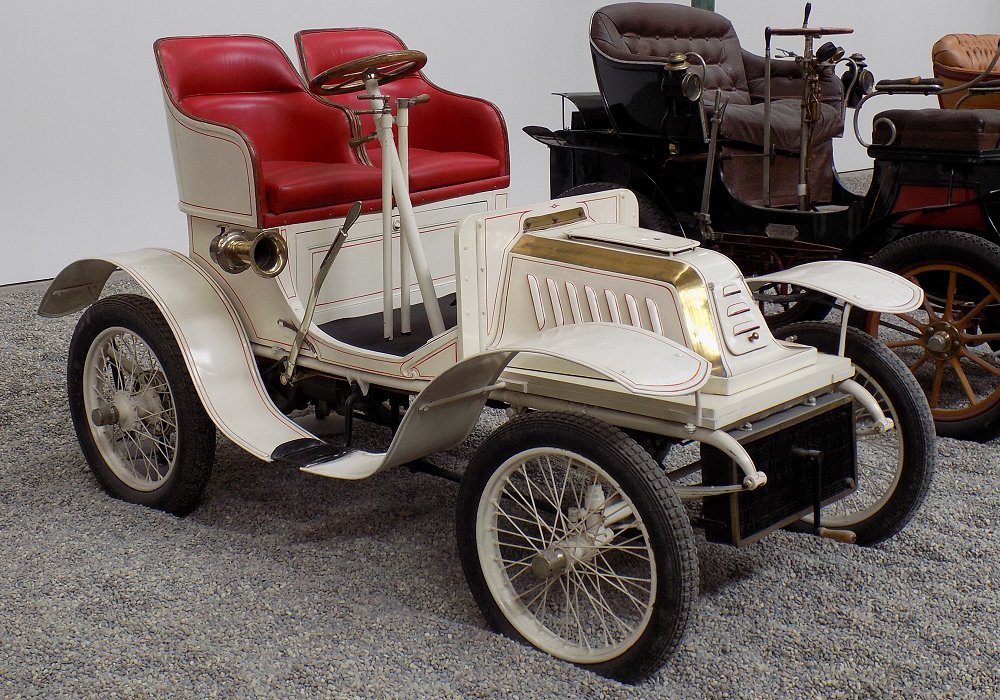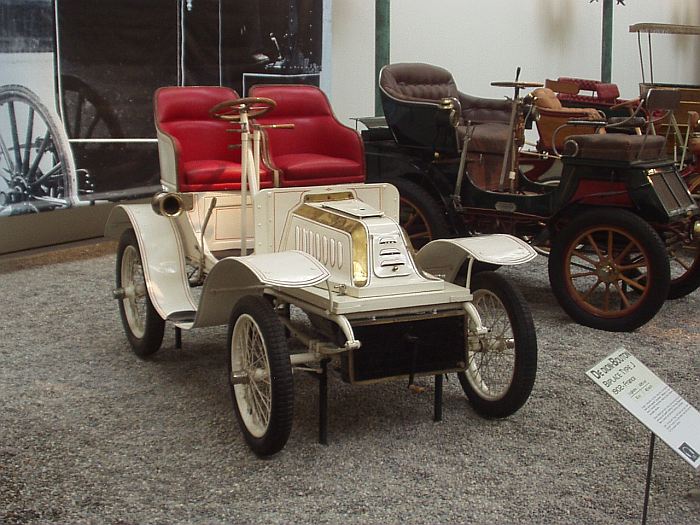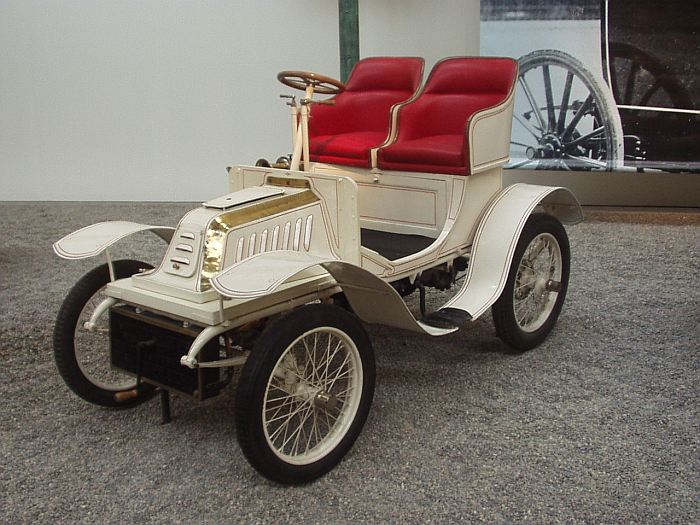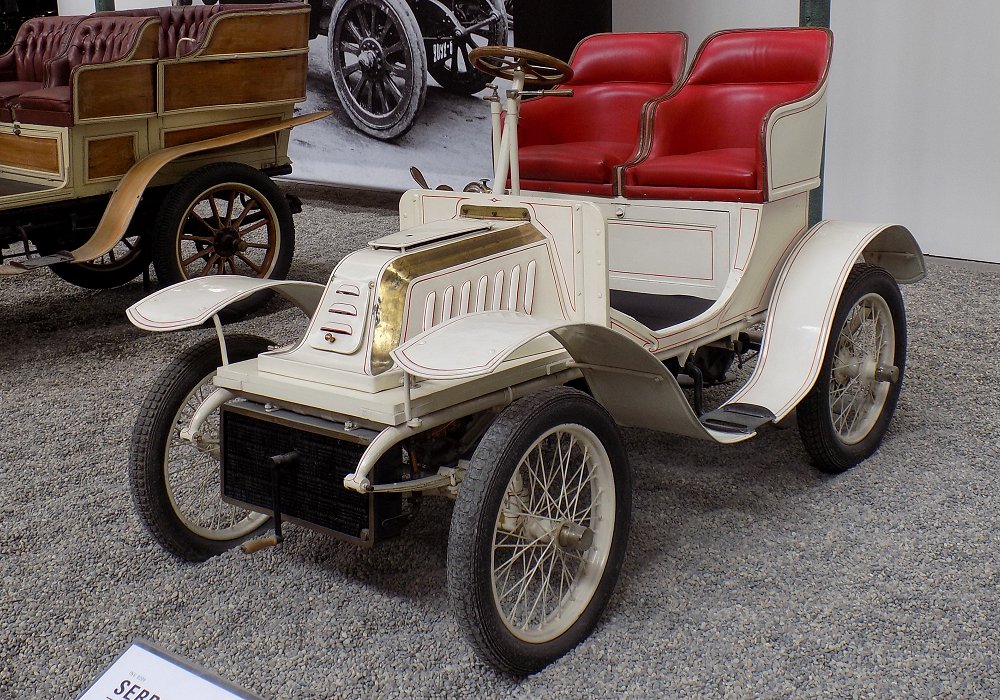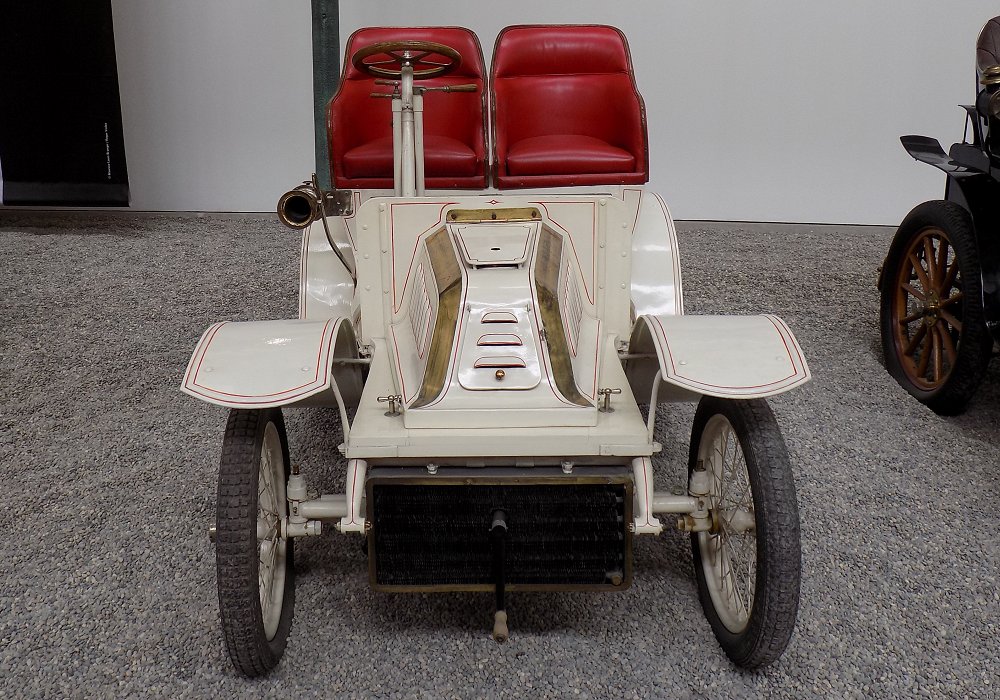Description
The De Dion-Bouton Type J Biplace was a compact and elegant motorcar produced in the early 1900s by the renowned French manufacturer De Dion-Bouton. This model, like others in the company’s lineup during this period, showcased their commitment to pioneering automotive design, especially in small-displacement internal combustion vehicles that offered practical transportation without sacrificing refinement.
The Type J was powered by a single-cylinder engine mounted at the rear of the vehicle, a hallmark of early De Dion-Bouton design. These engines were known for their reliability, smooth operation, and simplicity, making them ideal for light passenger cars in an era when breakdowns were common and roadside assistance nonexistent. The engine, typically displacing under one liter, drove the rear wheels through a system of gears and chains, and featured the company’s well-regarded atmospheric intake and mechanically operated exhaust valve setup.
The biplace body configuration indicated a two-seater layout, designed primarily for personal or couple use. The seats were mounted in tandem or side by side depending on the variation, and the body was typically open, in keeping with the lightweight construction and minimalistic approach of the era. This style allowed for a more intimate motoring experience and was popular with early motorists who used these cars for leisure and short-distance travel.
The chassis of the Type J was light but robust, made from steel or reinforced wood components. It used semi-elliptic leaf springs to support the axles, which provided a surprisingly comfortable ride on the uneven and often unpaved roads of the time. The car’s wheels were spoked and fitted with solid or pneumatic rubber tires, and steering was controlled via a tiller or an early form of a steering wheel.
Braking systems were primitive by modern standards, often comprising a transmission brake and a secondary hand-operated brake acting on the rear wheels. However, given the modest speed capabilities of the Type J, usually topping out around 30–40 km/h, these systems were generally sufficient.
The De Dion-Bouton Type J Biplace represented the merging of innovative engineering with the growing demand for private motoring. It offered an accessible and stylish option for early drivers and reflected the growing independence that automobiles provided. Today, surviving examples are rare and cherished by collectors for their historical significance and mechanical charm.
